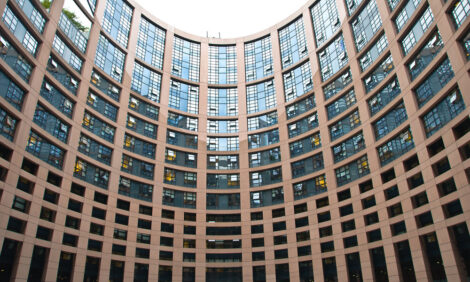



Immune Response Study to Help PCV2 Control
SWITZERLAND - Scientists have studied the influence of porcine circovirus type 2 (PCV2) on lymphocytes in weaned pigs that do not show clinical symptoms. This knowledge will help in the further study of the pathogenesis of the disease and its prevention, say Steiner and her co-authors.Steiner and colleagues at Institute of Virology and Immunoprophylaxis at Mittelhäusern in Switzerland have studied the immune responses in pigs specific to porcine circovirus type 2 (PCV2), alone and as a co-infection with porcine parvovirus (PPV). Their paper is published in BMC Veterinary Research.
PCV2 is a dominant causative agent of post-weaning multisystemic wasting syndrome (PMWS), a multifactorial disease complex with putative immunosuppressive characteristics, explain Steiner and her co-authors. Little is known about adaptive PCV2-specific immune responses in infected pigs. Therefore, they studied T and B cell responses following PCV2 infection in three-week old specific pathogen-free (SPF) piglets infected with PCV2 or PCV2 plus PPV.
Results
All animals were asymptomatically infected. At seven days post infection, B lymphocyte and T lymphocyte numbers decreased in the dual infected, but not in the single infected piglets. At this time point, a transient PCV2 viraemia was noted in the PCV2-infected groups. Antibodies against the infecting virus were detectable at days 24 to 28 post-infection for anti-PCV2 antibodies and at day 10 post-infection for anti-PPV antibodies, with no apparent influence of PCV2 on the early PPV antibody development.
In the animals infected with PPV alone, IFN-gamma secreting cells (SC) that were not specific for PCV2 were detected by ELISPOT assay at day 7 post-infection. Interestingly, this response was absent in the PCV2/PPV dual infected animals. PCV2-specific IFN-gamma SC were observed in the PCV2/PPV infected group at seven days post-infection and in the PCV2 single infected group at 21 days post-infection.
A reduction in the numbers of IFN-gamma SC was observed following anti-CD4 and anti-CD8 antibody treatment, suggesting roles for both CD4+41 and CD8+42 T cells in the response against PCV2 infection. This was supported by an observed increase in the percentage of IFN-gamma positive CD8hi 43 cytotoxic T cells as well as IFN-gamma positive CD8-/low 44 helper T cells after PCV2 in vitro re-stimulation.
Conclusions
Steiner and co-authors conclude that infection of weaned SPF piglets with PCV2 alone or combined with PPV does not induce disease and in both cases, a relatively slow anti-PCV2 antibody response and weak lymphocyte responses were found.
In their conclusion, they state: 'Asymptomatic PCV2-infected animals develop antigen-specific humoral and T cell responses, albeit with a relatively slow kinetics. The latter involves both CTL and helper T lymphocyte populations, confirmed as PCV2-specific through comparative stimulations with PCV2 and mock antigens.'
They add that this knowledge on such immunological characteristics is important for both PCV2 pathogenesis and vaccination.
Reference
Steiner E., C. Balmelli, H. Gerber, A. Summerfield and K. McCullough. 2009. Cellular adaptive immune response against porcine circovirus type 2 in subclinically infected pigs. BMC Veterinary Research, 5:45 doi:10.1186/1746-6148-5-45
Further Reading
| - | You can view the full report (in provisional PDF format) by clicking here. |
Further Reading
| - | Find out more information on Post-Weaning Multisystemic Wasting Syndrome (PMWS) by clicking here. |








